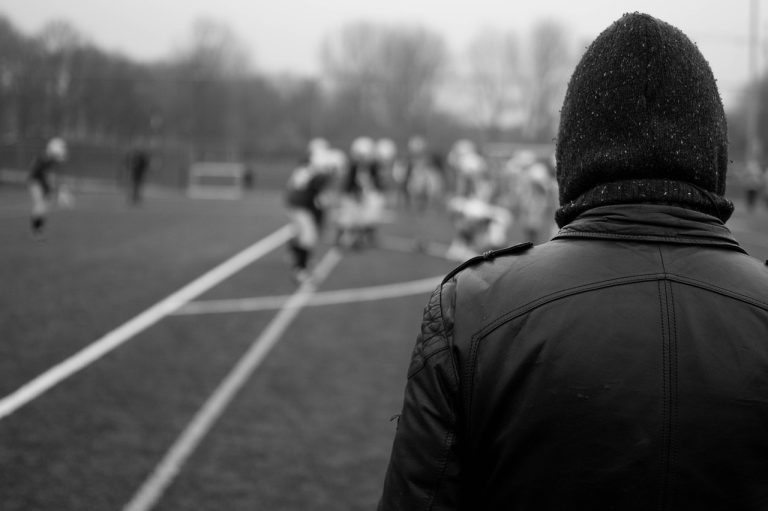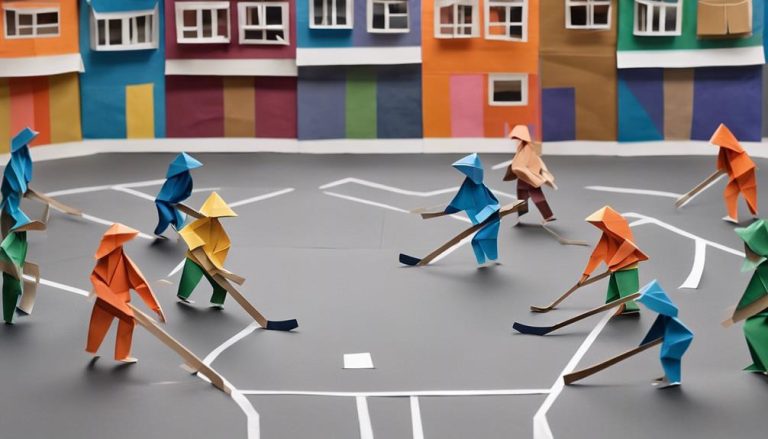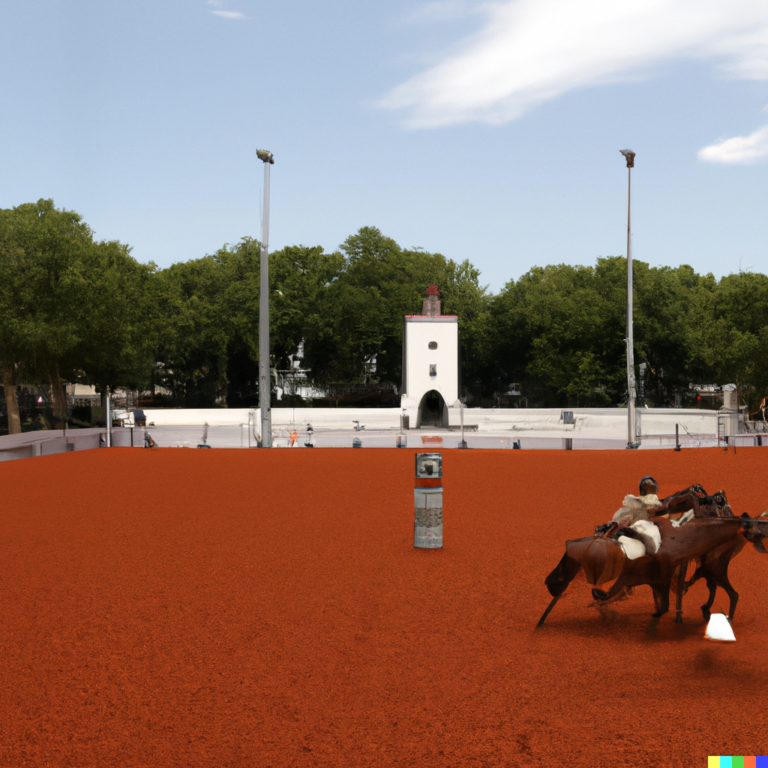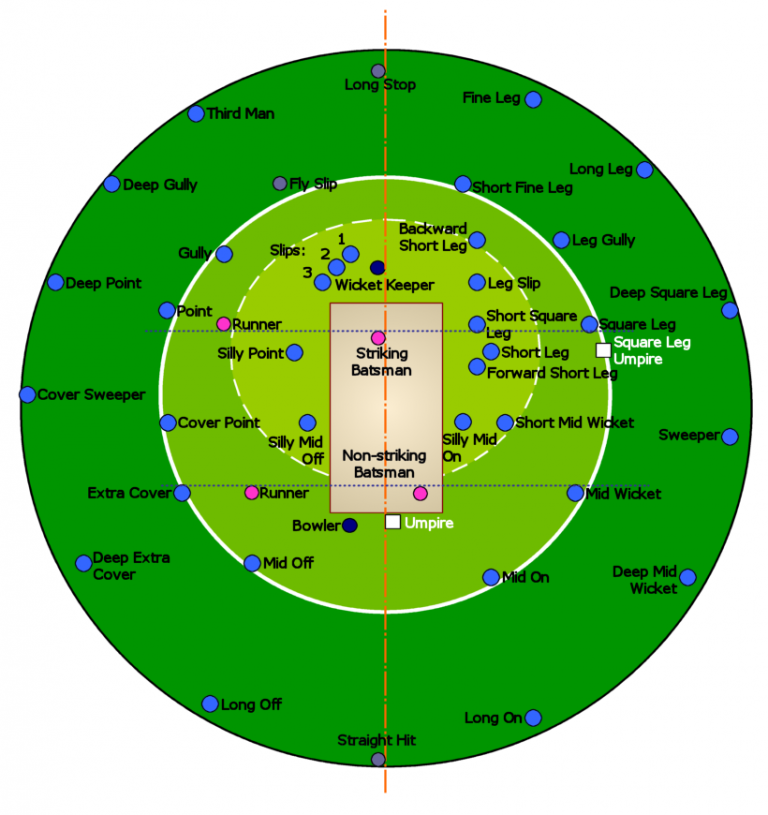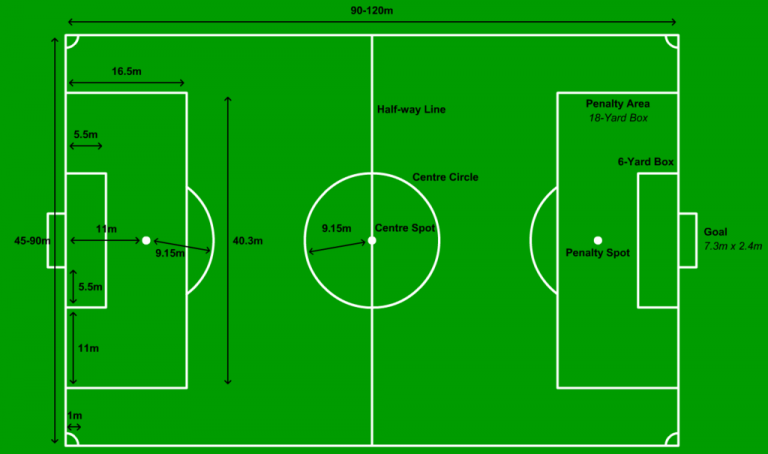General Rules of Walking Netball
Do you love the sport of netball but find the fast-paced nature of the game a bit overwhelming? If so, there’s no need to worry because walking netball is here to save the day! This variation of the game allows you to indulge in all the excitement and camaraderie of netball but at a more relaxed and leisurely pace.
In this article, we will take you through the general rules of playing walking netball, ensuring that you have a fantastic time on the court while staying true to the spirit of the game.

Walking netball is a modified version of traditional netball designed to accommodate players of all ages and fitness levels. It provides a wonderful opportunity for individuals who may have previously played netball but are now looking for a less physically demanding alternative. Additionally, walking netball is an excellent option for those who are new to the sport and want to ease themselves into the game.
The rules of walking netball are quite similar to traditional netball, with a few key adaptations. Firstly, as the name suggests, players are required to walk instead of run during gameplay. This alteration allows for a safer and more inclusive environment, as players can participate without the fear of collisions or injuries that may occur during high-speed movements.
Another modification is the restriction on jumping or hopping while in possession of the ball. This rule ensures that the game remains at a controlled walking pace and reduces the risk of falls or accidents. However, players are still encouraged to use tactical footwork and strategic positioning to outmaneuver their opponents and create scoring opportunities.
In walking netball, teamwork and communication play a crucial role. Players must work together to pass the ball, create space, and defend against the opposing team. While the pace may be slower, the game still demands quick thinking, decision-making, and accurate passing.
By embracing the rules of walking netball, you can enjoy all the benefits of the sport while maintaining a more relaxed and accessible environment. So grab your sneakers, assemble your team, and get ready to have a blast on the walking netball court!
Court Dimensions and Equipment
To play walking netball, you’ll need a standard netball court and the necessary equipment. The court dimensions for netball are standardized, ensuring a fair and consistent playing field for all participants. The court is rectangular, measuring 30.5 meters long and 15.25 meters wide. The court is divided into three distinct areas: the center third, the goal thirds, and the shooting circles.
The center third is where the game starts and restarts after each goal is scored. The goal thirds are where the goals are located, and the shooting circles are marked around the goalposts.
Netball court markings play a crucial role in the game. The center third is marked with a circle, which is divided into three equal sections. The goal thirds are marked with a semi-circle, extending from the goal line to the edge of the court. The shooting circles are circles with a radius of 0.9 meters, centered on the goalposts.
In addition to the court markings, you’ll need the necessary equipment to play walking netball. The netball equipment list includes a netball, which is a size 5 ball typically made of leather or synthetic material. It’s important to have a properly inflated ball to ensure accurate and consistent play. Players should also wear appropriate sports attire, including comfortable shoes with good grip to prevent slipping on the court.
Team Composition and Positions
When assembling your walking netball team, it’s important to consider the composition and positions of your players. Team composition and positions play a crucial role in the success of your team, as they determine the overall strategy and effectiveness on the court.
Here are some key considerations for team composition and positions in walking netball:
-
Balance of skills: Ensure that your team has a good mix of players with different skills and abilities. This will allow for a well-rounded team that can excel in different aspects of the game.
-
Team communication: Effective communication is essential in walking netball. Encourage your team members to communicate with each other during the game, whether it’s calling for a pass, providing support, or giving instructions. Clear communication helps the team work together and make informed decisions on the court.
-
Player rotation: To maintain energy levels and prevent fatigue, it’s important to have a system for player rotation. Regularly swapping players in and out of the game ensures that everyone gets a fair chance to participate and contribute to the team’s success.
-
Position-specific roles: Assigning specific roles to players based on their strengths and abilities can enhance the team’s performance. For example, a player with good shooting skills can be designated as a goal shooter, while someone with excellent defensive abilities can be assigned as a goal defender. By playing to each player’s strengths, you can maximize the effectiveness of your team.
Starting and Restarting the Game
To start or restart a game of walking netball, the referee will either blow a whistle or give a verbal cue. Players must adhere to specific positioning guidelines, such as being stationary during a restart and having at least one foot in the designated area.
Scoring and possession rules also come into play, with points awarded for successfully shooting the ball into the opponent’s net and possession changing hands when a player makes contact with the ball.
Whistle or Verbal Cue
Use a whistle or a verbal cue to signal the start or restart of the game by blowing the whistle or saying ‘start’ or ‘restart’ out loud. This is an essential aspect of walking netball, as it ensures that all players are aware of when the game begins or resumes after a stoppage.
Here are four reasons why using a whistle or verbal cue is crucial in walking netball:
-
Clarity: By using a clear and distinct signal, such as a whistle or a verbal cue, all players can easily understand when the game is starting or restarting.
-
Uniformity: Whistle or verbal cues provide a consistent method of communication for all players, ensuring that everyone is on the same page.
-
Inclusivity: Visual cues or hand signals may not be easily visible to all players, especially those with visual impairments. Using a whistle or verbal cue allows for equal participation and understanding.
-
Efficiency: Whistle or verbal cues enable a quick and efficient start or restart of the game, minimizing any confusion or delays.
Player Positioning Guidelines
Now, how should you position yourself when starting or restarting the game in walking netball? Player positioning plays a crucial role in the success of offensive strategies and effective player communication. To help you understand the different positions and their responsibilities, refer to the table below:
| Position | Responsibilities |
|---|---|
| Center | Controls the game, distributes the ball, and provides support to both offensive and defensive players. |
| Shooters | Focus on scoring goals and positioning themselves near the shooting circle. |
| Wing Attack | Works closely with the center and shooters, creating attacking opportunities and feeding the ball into the shooting circle. |
| Wing Defense | Defends against the opposing team’s wing attack and helps the center in controlling the game. |
| Goal Defense | Guards the shooting circle and tries to prevent the opposing team from scoring. |
Scoring and Possession Rules
When starting or restarting the game in walking netball, you must adhere to specific scoring and possession rules. Here are some important guidelines to keep in mind:
-
Possession Rules: In walking netball, players can only hold the ball for three seconds before passing or shooting. This rule promotes quick and continuous gameplay, encouraging players to make efficient decisions.
-
Scoring Techniques: Walking netball follows traditional netball scoring rules, where each successful goal scored from within the shooting circle counts as one point. The team with the most points at the end of the game wins. It’s important to aim for accuracy and precision when shooting, as every point counts towards securing victory.
-
Restarting the Game: After a goal is scored, the game restarts with a center pass. The team that didn’t score the goal takes the center pass, allowing for equal opportunities and a fair distribution of possession.
-
Offside Rule: To maintain fair gameplay, players mustn’t enter areas of the court where they aren’t allowed. This ensures that all players have an equal chance to defend and attack.
Movement and Footwork
Improve your movement and footwork in walking netball by focusing on proper positioning and quick pivoting. Footwork drills and agility training are essential for enhancing your performance on the court.
By incorporating these exercises into your training routine, you can increase your speed, agility, and overall coordination.
One effective footwork drill is the ladder drill. Set up a ladder on the ground and practice moving your feet quickly in and out of each square. This drill helps improve your foot speed and coordination, allowing you to move swiftly and efficiently on the court.
Another beneficial exercise is the cone drill. Set up cones in a zigzag pattern and practice weaving in and out of them while maintaining your balance and control. This drill enhances your agility and helps you navigate around defenders with ease.
In addition to footwork drills, agility training is crucial for improving your movement in walking netball. Incorporate exercises such as ladder runs, side shuffles, and high knees into your workouts to enhance your speed and agility. These exercises not only improve your footwork but also strengthen your muscles, enabling you to change direction quickly and effectively.
Remember to focus on proper positioning during gameplay. Always keep your feet shoulder-width apart, allowing for a stable base. This will help you maintain balance and react swiftly to changes in direction.
Passing and Catching the Ball
To improve your gameplay in walking netball, focus on your passing and catching skills. These skills are essential for effective ball control and maintaining possession during the game. Here are some tips to help you improve your passing and catching abilities:
-
Focus on accuracy: When passing the ball, aim to deliver it precisely to your teammate’s hands. Practice your aim by targeting specific spots on the court or using markers as targets. Similarly, when catching the ball, position your hands correctly to ensure a secure grip.
-
Use proper technique: When passing, use both hands to create a strong and accurate throw. Step towards your target and follow through with your arms to generate power. When catching, keep your hands relaxed and soft to absorb the impact of the ball.
-
Maintain good communication: Communication is key in walking netball. Use verbal cues, such as calling for the ball or indicating where you want your teammate to pass. Non-verbal cues, like eye contact or hand signals, can also help improve coordination and understanding on the court.
-
Practice different passing techniques: Develop a range of passing techniques, including chest passes, bounce passes, and overhead passes. Varying your passing techniques will make it harder for defenders to anticipate your moves and increase your team’s chances of success.
Shooting and Scoring
When it comes to shooting and scoring in walking netball, there are key techniques that can help improve accuracy.
By focusing on proper footwork, hand placement, and follow-through, you can increase your chances of scoring points.
Additionally, scoring points requires strategic positioning and communication with your teammates to create scoring opportunities and successfully convert them into points for your team.
Shooting Techniques for Accuracy
One way to enhance your shooting accuracy in walking netball is by focusing on your aim and alignment. Here are four shooting techniques that can help you improve your accuracy and increase your scoring opportunities:
-
Find your dominant eye: Determine which eye is your dominant one and use it to focus on the target. This will help you aim more accurately and consistently.
-
Maintain a balanced stance: Position your feet shoulder-width apart and distribute your weight evenly. This will provide a stable base and improve your shooting accuracy.
-
Follow through: After releasing the ball, continue the shooting motion until your hand is fully extended. This will ensure consistency and help you maintain accuracy.
-
Practice shooting from different angles: Experiment with shooting from various positions on the court. This will help you develop a better understanding of how to adjust your technique based on your location.
Strategies for Scoring Points
To score points in walking netball, focus on your shooting and scoring strategies. The key to successful shooting is mastering different shooting techniques. You can improve your accuracy by practicing the following techniques:
-
Bounce Shot: Aim to bounce the ball off the ground before it reaches the net. This can catch defenders off guard.
-
Bank Shot: Use the backboard to your advantage. Aim for the top corner of the backboard to increase your chances of scoring.
-
Jump Shot: This technique involves jumping while shooting. It allows you to shoot over defenders and increase your shooting angle.
In addition to shooting techniques, defensive strategies play a crucial role in scoring points. By understanding your opponent’s defensive tactics and finding ways to outsmart them, you can create more scoring opportunities. Anticipating their movements, using quick passes, and finding open spaces on the court are effective strategies for scoring points in walking netball.
Importance of Teamwork in Scoring
To successfully score in walking netball, it’s important to understand and prioritize teamwork in both shooting and scoring. Here are four reasons why effective team coordination and communication are crucial for scoring in walking netball:
-
Creating space: By working together as a team, players can create space on the court, allowing for better shooting opportunities. Communication and coordination are key in ensuring everyone is in the right position to receive a pass and make a shot.
-
Passing accuracy: Proper teamwork ensures accurate passing, increasing the chances of scoring. Effective communication helps players anticipate each other’s movements, leading to more successful passes and scoring opportunities.
-
Drawing defenders: Teamwork allows players to strategically draw defenders away from the shooter, creating openings for scoring. By coordinating their movements and passing the ball efficiently, players can confuse defenders and create scoring opportunities.
-
Support and encouragement: Teamwork fosters a supportive environment where players can encourage and motivate each other. This positive atmosphere boosts confidence and helps players perform better, leading to improved scoring outcomes.
Contact and Defensive Tactics
When playing walking netball, it is important to understand the rules and techniques for contact and defensive tactics. Defensive strategies and contact rules play a crucial role in maintaining the integrity of the game and ensuring fair play. By employing effective defensive tactics, you can prevent your opponents from scoring and gain an advantage for your team. Here are some key defensive strategies and contact rules to keep in mind:
| Defensive Strategies | Contact Rules |
|---|---|
| Stay in your designated area and mark your opponent closely. | Avoid physical contact with your opponent. |
| Anticipate your opponent’s moves and position yourself accordingly. | Use your body position and footwork to block your opponent’s path. |
| Communicate with your teammates to coordinate defensive efforts. | Challenge your opponent’s space without making physical contact. |
| Intercept passes and anticipate where the ball will go. | Avoid reaching over or grabbing your opponent’s arms or body. |
By implementing these defensive strategies and adhering to the contact rules, you can effectively defend your team’s goal and prevent the opposing team from scoring. It is important to remember that walking netball is a non-contact sport, and physical contact with opponents is not allowed. Instead, focus on using your body position, footwork, and communication skills to disrupt your opponent’s play and regain possession of the ball.
Time Limits and Substitutions
As a player in a walking netball game, you should be aware of the time limits and the process for substitutions. Time management and player rotation are essential aspects of the game that contribute to its smooth flow and fairness. Here are four things you need to know about time limits and substitutions in walking netball:
-
Time limits: Each walking netball game typically consists of four quarters, each lasting 10 minutes. The clock starts running as soon as the first whistle is blown, and it stops during timeouts, injuries, or other interruptions. It’s crucial to be aware of the time remaining to make the most of your playing time and strategize accordingly.
-
Substitutions: Walking netball allows for unlimited substitutions throughout the game. It provides an opportunity for players to rest, recover, or strategize with their teammates on the sidelines. Coaches or captains usually manage substitutions to ensure fair play and maintain team energy levels.
-
Player rotation: Walking netball encourages player rotation to ensure equal participation and opportunities for everyone on the team. It allows players to experience different positions and roles, contributing to skill development and team cohesion. Embracing player rotation also fosters a sense of belonging and inclusivity within the team.
-
Communication and teamwork: Effective time management and substitutions require clear communication and teamwork. Players should communicate with each other and their coach/captain to ensure smooth transitions during substitutions. It’s essential to support and encourage each other, regardless of who’s on the court at any given time.
Referee Signals and Penalties
You should familiarize yourself with the referee signals and penalties in walking netball. Referee communication is essential in ensuring fair play and maintaining order on the court. When a referee blows the whistle, it’s important to pay attention as they may be using specific signals to indicate penalties or communicate with players.
One common penalty in walking netball is a footwork violation. This occurs when a player takes more than one step while in possession of the ball. The referee will raise their hand and point toward the ground to indicate this violation.
Another common penalty is contact, which happens when a player makes physical contact with an opponent in an illegal manner. The referee will extend their arm horizontally, with the palm facing downwards, to signal this penalty.
Penalty enforcement in walking netball follows a similar process to traditional netball. When a penalty is awarded, the player who committed the infraction must stand out of play for a designated period. The opposing team is then given a free pass or a penalty pass, depending on the severity of the violation.
It’s important to remember that the referee’s decision is final, and arguing or disputing their calls can result in further penalties.
Understanding referee signals and penalties in walking netball is crucial for players to adhere to the rules and maintain a fair and enjoyable game. By familiarizing yourself with these signals, you can ensure that you’re playing within the boundaries and contributing to a positive sporting environment.
Frequently Asked Questions
Are There Any Restrictions on the Type of Footwear That Can Be Worn During a Walking Netball Game?
There aren’t any specific restrictions on the type of footwear you can wear during a walking netball game. However, it’s important to choose comfortable and supportive shoes that provide stability and reduce the risk of injury.
Walking netball offers numerous benefits, such as improved cardiovascular fitness, increased coordination, and a sense of belonging to a supportive community.
Can Players From Different Age Groups or Skill Levels Participate in the Same Walking Netball Team?
Yes, players from different age groups and skill levels can participate in the same walking netball team.
This inclusive sport allows people of all abilities and ages to come together and enjoy the game.
Whether you’re a seasoned pro or just starting, walking netball provides a supportive and welcoming environment where everyone can contribute and feel a sense of belonging.
Is There a Limit on the Number of Steps a Player Can Take While in Possession of the Ball?
There is no limit on the number of steps you can take while in possession of the ball in walking netball. The focus of the game is on walking, so you’re encouraged to keep the pace slow and controlled.
However, it’s important to note that running or jumping with the ball isn’t allowed.
As for footwear restrictions, it’s recommended to wear appropriate sports shoes that provide good support and grip on the court.
Are There Any Specific Rules Regarding the Height at Which the Ball Must Be Passed or Caught?
When playing walking netball, there are specific rules regarding the height at which the ball must be passed or caught. These height restrictions ensure fair play and prevent any advantage or disadvantage for players.
The rules state that the ball must be passed or caught below shoulder height. This ensures that the game remains accessible to all players, regardless of their height or physical abilities.
Can Players Use Their Arms or Body to Block Opponents From Reaching the Ball During a Game?
During a game of walking netball, you aren’t allowed to use physical contact to block opponents from reaching the ball. The rules prioritize a non-contact approach to ensure a safe and enjoyable playing experience.
However, there are strategies you can use to effectively defend against your opponents. These include positioning yourself strategically, anticipating their moves, and using your footwork to cut off passing lanes.

